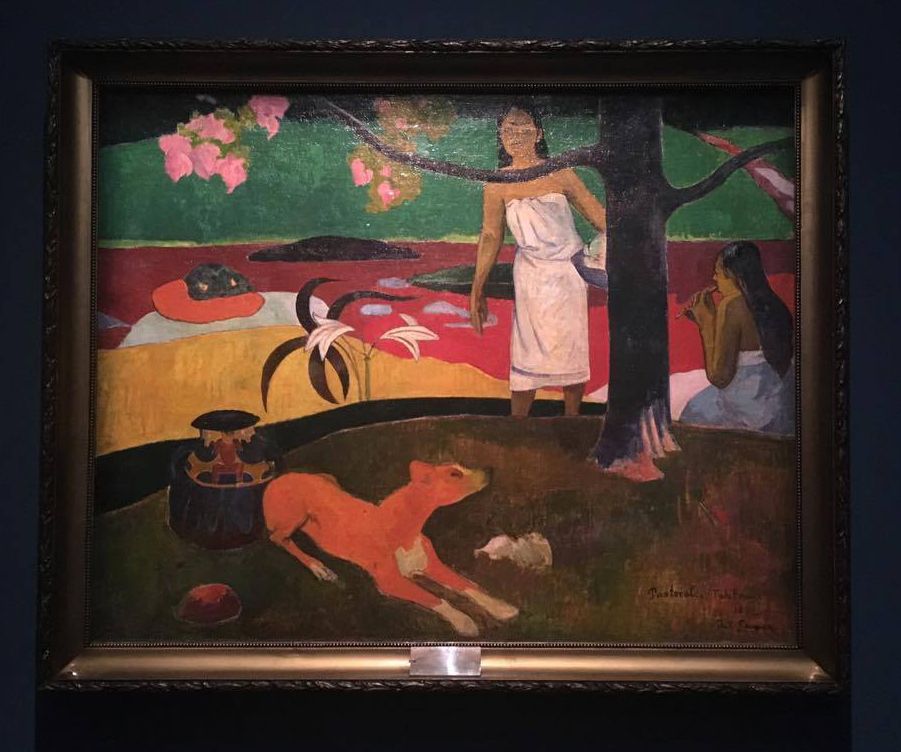An extraordinarily diverse range of Gauguin’s works with over 230 works of art, at the Grand Palais. This is bound to be one of the season’s block buster events, so book your ticket in advance through Divento, to jump the queue.
In 1889, Gauguin noted: “Take a little mud and one can create metal and gemstones; with a little mud and a little genius! Doesn’t this make it a fascinating substance?”
The reference “alchemist” reflects to Gauguin’s ability to transform materials and to see things in them, them that are not immediately obvious to others.
One of the major 19th century French artists and an important forefather of Modernism, Paul Gauguin (1848-1903) believed in the idea that painting was above all, an expression of one’s inner character, an idea which had a already been adopted in the 16th century by Leonardo da Vinci. Traditionally, it is the painting of Gauguin for which he is most heralded, with its dreamlike hues of colour inspired by his time in Brittany and French Polynesia? And while he wrote that painting was the “most beautiful of the arts”, Gauguin l’alchimiste shows the artist’s experimentation in other disciplines and his ability to transcend their conventional limits.
Recent research focusing on the techniques and materials used by Gauguin, have been used in the exhibition to highlight the diversity of his works, from his paintings, drawings and engravings, to his sculptures, ceramics and writing. During your visit, make sure you stop off in special rooms with projectors to immerse yourself in the creative process of the artist. This shows how Gauguin borrowed aspects from each discipline to create a distinctly unique style.
The reference to alchemy emphasises Gauguin’s interest in the symbolism, mysticism and occultism of fin de siècle 19th century France. This departure from reality and the blurring of the distinction between the real and the imaginary becomes increasingly clear as you make your way round Gauguin’s works. Highlights include a room dedicated to a manuscript of Noa Noa, Gauguin’s travel journal of his first visit to Tahiti (1891-1893) and rarely on show to the public.
Grand Palais, Galeries nationales
3 Avenue du Général Eisenhower, 75008 Paris
Enter through the Entrée Champs Elysées
Opening Times
Wednesday-Monday, 10.00-20.00
Late Opening
Wednesdays, Fridays and Saturdays, 10.00-22.00
Early Closure
11, 12, 20 October 2017 and 24, 31 December 2017, 10.00-18.00
Closed on 25 December 2017
Holiday Hours
21 October 2017 – 5 November 2017, Wednesday-Monday, 10.00-22.00 (except 5 November, 10.00-20.00)
23 December 2017 – 7 January 2018, Every day, 09.00-22.00 (except 7 January, 09.00-20.00)
Accessibility
One room in the exhibition is not accessible for wheelchair users requiring 11 steps.





